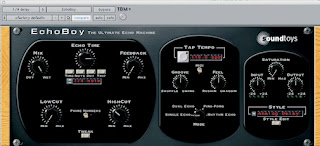Here's an excerpt from the 3rd edition of The Mixing Engineer's Handbook that looks at 5 techniques to make that vocal work better with the track. I've also added a quote from my good buddy Dave Pensado (his interview is also in the book) about one of the techniques that he uses.
"Here are a number of techniques often used for particular mix elements. Don’t limit yourself to the examples cited though, as they can easily work for other instruments, vocals or program sources as well.
2. To simulate a vocal double, dial in a 1/16th note delay, then modulate it (see the Modulation section of this chapter) so it slowly raises and lowers in pitch. If the modulation can be set so it’s random, it will sound more realistic.
To read additional excerpts from The Mixing Engineer's Handbook or other books, go to the excerpts page of bobbyowsinski.com.
3. For a quick vocal effect to give it some space and depth during tracking or overdubs, set up a mono 220 millisecond delay with a couple of repeats.
4. Paul McCartney reportedly uses a 175 millisecond delay on his vocals almost all the time.
5. For getting a dry vocal to jump out, use two bandwidth limited (at about 400Hz to 2.5kHz) delays in the neighborhood of 12 ms to the left and 14 ms to the right each panned slightly off center. Bring up the delays until you can hear them in the mix, then back it off to where you can't. Occasionally mute the returns to make sure it's still bringing the vocals out as they sit well into the rest of the balance. You can also time the delays to a 1/64th note on one side and a 1/128th note on the other.
I like a vocal mostly dry, but then it usually doesn’t sound big enough. You want the vocalist to sound like they’re really powerful and dynamic and just giving it everything, so I’ll put an 1/8th note delay on the vocal but subtract a 1/16th, a 32nd or 64th note value from that 1/8th note. What it does is give a movement to the delay and makes the singer have an urgency that’s kind of neat. I put the 1/8th minus 1/64th on the left side, and put the straight 1/8th note on the right side. You can experiment with pushing the pitch up a little bit on one side and down on another too if your singer’s a little pitchy, since that usually makes them sound a bit more in tune. Sometimes putting the 1/8th note triplet on one side and the straight 1/8th note on the other, if you’ve got any kind of swing elements of the track, will make the vocal big, yet it doesn’t make the singer sound like he’s taking a step back. Dave Pensado
To read additional excerpts from The Mixing Engineer's Handbook or other books, go to the excerpts page of bobbyowsinski.com.
----------------------------------
You should follow me on Twitter for daily news and updates on production and the music business.
Don't forget to check out my Music 3.0 blog for tips and tricks on navigating social media and the new music business.



No comments:
Post a Comment